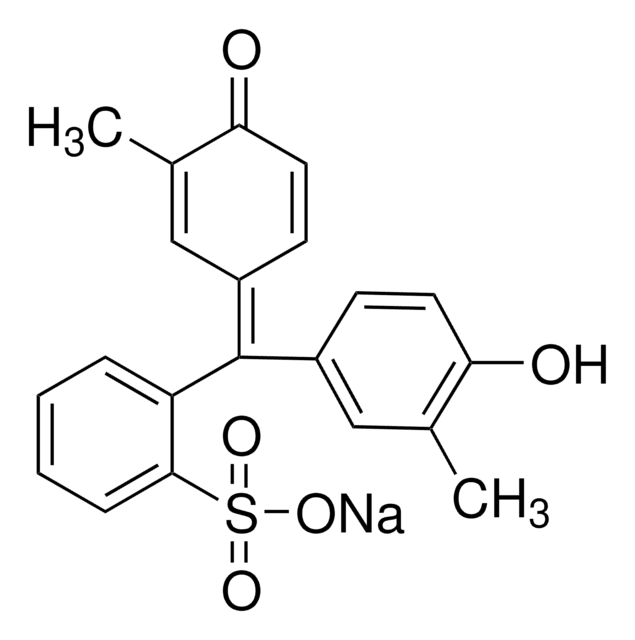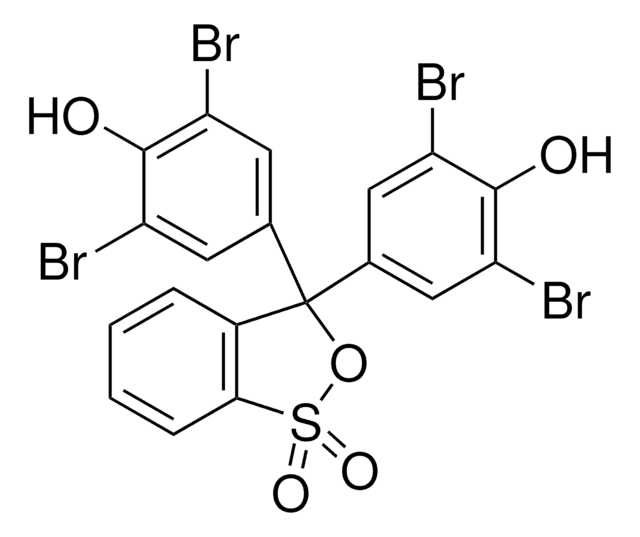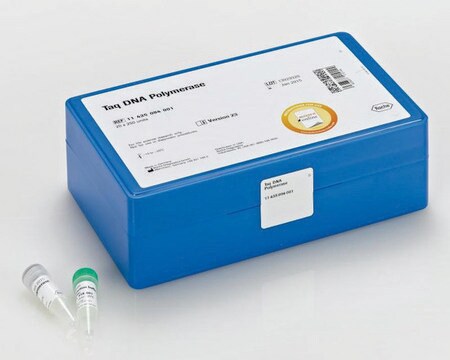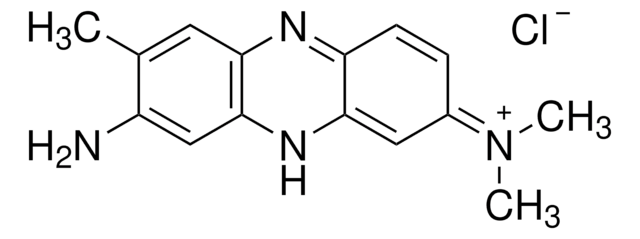114472
Kresolrot
indicator grade, Dye content 95 %
Synonym(e):
o-Kresolsulfonphthalein
About This Item
Empfohlene Produkte
Qualität
indicator grade
Qualitätsniveau
Form
powder or crystals
Zusammensetzung
Dye content, 95%
Methode(n)
titration: suitable
Farbe
red-brown
pH-Wert
7.2-8.8, yellow to red
Nützlicher pH-Bereich
1.8-2.0, orange to yellow(acid)
7.0-8.8, yellow to violet(alkaline)
mp (Schmelzpunkt)
290 °C
Dichte
0.998 g/cm3
λmax
367 nm (2nd)
570 nm
Anwendung(en)
diagnostic assay manufacturing
hematology
histology
Lagertemp.
room temp
SMILES String
Cc1cc(ccc1O)C2(OS(=O)(=O)c3ccccc23)c4ccc(O)c(C)c4
InChI
1S/C21H18O5S/c1-13-11-15(7-9-18(13)22)21(16-8-10-19(23)14(2)12-16)17-5-3-4-6-20(17)27(24,25)26-21/h3-12,22-23H,1-2H3
InChIKey
OBRMNDMBJQTZHV-UHFFFAOYSA-N
Suchen Sie nach ähnlichen Produkten? Aufrufen Leitfaden zum Produktvergleich
Allgemeine Beschreibung
Anwendung
Lagerklassenschlüssel
11 - Combustible Solids
WGK
WGK 3
Persönliche Schutzausrüstung
dust mask type N95 (US), Eyeshields, Gloves
Hier finden Sie alle aktuellen Versionen:
Besitzen Sie dieses Produkt bereits?
In der Dokumentenbibliothek finden Sie die Dokumentation zu den Produkten, die Sie kürzlich erworben haben.
Kunden haben sich ebenfalls angesehen
Unser Team von Wissenschaftlern verfügt über Erfahrung in allen Forschungsbereichen einschließlich Life Science, Materialwissenschaften, chemischer Synthese, Chromatographie, Analytik und vielen mehr..
Setzen Sie sich mit dem technischen Dienst in Verbindung.










